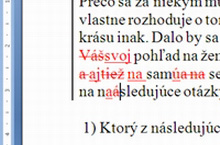 The term language management as originally conceived by Björn H. Jernudd and Jiří V. Neustupný is based on the discrimination between two processes which characterize language use: (1) the production and reception of discourse, that is, speaking, writing, listening and reading, and (2) the human activities aimed at discourse production and reception. The latter, metalinguistic, type of activities are called language management. Neustupný, echoing Joshua Fishman's wording, often describes language management also as behavior toward language.
The term language management as originally conceived by Björn H. Jernudd and Jiří V. Neustupný is based on the discrimination between two processes which characterize language use: (1) the production and reception of discourse, that is, speaking, writing, listening and reading, and (2) the human activities aimed at discourse production and reception. The latter, metalinguistic, type of activities are called language management. Neustupný, echoing Joshua Fishman's wording, often describes language management also as behavior toward language.
Language management can be exemplified by the activity of a speaker repeating, with careful pronunciation, a foreign word that his interlocutor failed to understand, or a writer making corrections in a computer text file (as in the picture on the right), or a governmental body having road signage installed (as in the stylized picture in the header of this web site). These three examples show that language management acts are very diverse in nature. It is the goal of Language Management Theory to theoretically grasp this internally diverse type of human activity in a coherent way.
Continuation:
